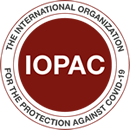WHO to roll out learning and monitoring tools to improve service provision during pandemicThe World Health Organization (WHO) today published a first indicative survey on the impact of COVID-19 on health systems based on 105 countries’ reports. Data collected from five regions over the period from March
to June 2020 illustrate that almost every country (90%) experienced disruption to its health services, with low- and middle-income countries reporting the greatest difficulties. Most countries reported that many routine and elective services
have been suspended, while critical care – such as cancer screening and treatment and HIV therapy – has seen high-risk interruptions in low-income countries.
“The survey shines a light on the cracks in our health systems, but it also serves to inform new strategies to improve healthcare provision during the pandemic and beyond,” said Dr Tedros Adhanom Ghebreyesus, WHO Director-General. “COVID-19 should be a lesson to all countries that health is not an ‘either-or’ equation. We must better prepare for emergencies but also keep investing in health systems that fully respond to people’s needs throughout the life course.”Services hit across the board: Based on reports from key informants, countries on average experienced disruptions in 50% of a set of 25 tracer services. The most frequently disrupted areas reported included routine immunization – outreach services (70%) and facility-based services (61%), non-communicable diseases diagnosis and treatment (69%), family planning and contraception (68%), treatment for mental health disorders (61%), cancer diagnosis and treatment (55%). Countries also reported disruptions in malaria diagnosis and treatment (46%), tuberculosis case detection and treatment (42%) and antiretroviral treatment (32%). While some areas of health care, such as dental care and rehabilitation, may have been deliberately suspended in line with government protocols, the disruption of many of the other services is expected to have harmful effects on population health in the short- medium- and long-term.Potentially life-saving emergency services were disrupted in almost a quarter of responding countries. Disruptions to 24-hour emergency room services for example were affected in 22% of countries, urgent blood transfusions were disrupted in 23% of countries, emergency surgery was affected in 19% of the countries. Disruption due to a mix of supply and demand side factors. 76% of countries reported reductions in outpatient care attendance due to lower demand and other factors such as lockdowns and financial difficulties. The most commonly reported factor on the supply side was cancellation of elective services (66%). Other factors reported by countries included staff redeployment to provide COVID-19 relief, unavailability of services due to closings, and interruptions in the supply of medical equipment and health products.Adapting service delivery strategies. Many countries have started to implement some of the WHO recommended strategies to mitigate service disruptions, such as triaging to identify priorities, shifting to on-line patient consultations, changes to prescribing practices and supply chain and public health information strategies. However, only 14% of countries reported removal of user fees, which WHO recommends to offset potential financial difficulties for patients.The pulse survey also provides an indication of countries’ experiences in adapting strategies to mitigate the impact on service provision. Despite the limitations of such a survey, it highlights the need to improve real-time monitoring of changes in service delivery and utilization as the outbreak is likely to wax and wane over the next months, and to adapt solutions accordingly. To that end, WHO will continue to work with countries and to provide supportive tools to address the fallout from COVID-19. Given countries’ urgent demand for assistance during the pandemic response, WHO is developing the COVID19: Health Services Learning Hub, a web-based platform that will allow sharing of experiences and learning from innovative country practices that can inform the collective global response. WHO is also devising additional surveys at the sub-national level and in health facilities to gauge the longer-term impact of disruptions and help countries weigh the benefits and risks of pursuing different mitigation strategies. Note to editorsThe survey ‘Rapid assessment of continuity of essential health services during the COVID-19 pandemic’ (HYPERLINK), was conducted in 159 countries (all WHO regions except the Americas). 105 responses were received (66% response rate) from senior ministry of health officials covering the period from March to June 2020. The purpose of the survey was to gain insights and perspectives on both the impact of the COVID-19 pandemic on up to 25 essential health services in countries and how countries are adapting strategies to maintain essential services.While pulse surveys have some limitations, the strength of this effort is that it is comprehensive, looking at 25 core health services (as opposed to single topic surveys) and representing disruptions to these services in a comparable way across over 100 countries. It reveals that even robust health systems can be rapidly overwhelmed and compromised by a COVID-19 outbreak, reinforcing the need for sustained data collection and strategic adaptations to ensure maintenance of essential care provision.Links:SurveyOperational Guidance for maintaining essential services during an outbreak
In WHO global pulse survey, 90% of countries report disruptions to essential health services since COVID-19 pandemic
More from All WHO newsMore posts in All WHO news »
- International Pathogen Surveillance Network announces first recipients of grants to better understand disease threats
- The first-ever global oral health conference highlights universal health coverage by 2030
- Lebanon: a conflict particularly destructive to health care
- WHO adds LC16m8 mpox vaccine to Emergency Use Listing
